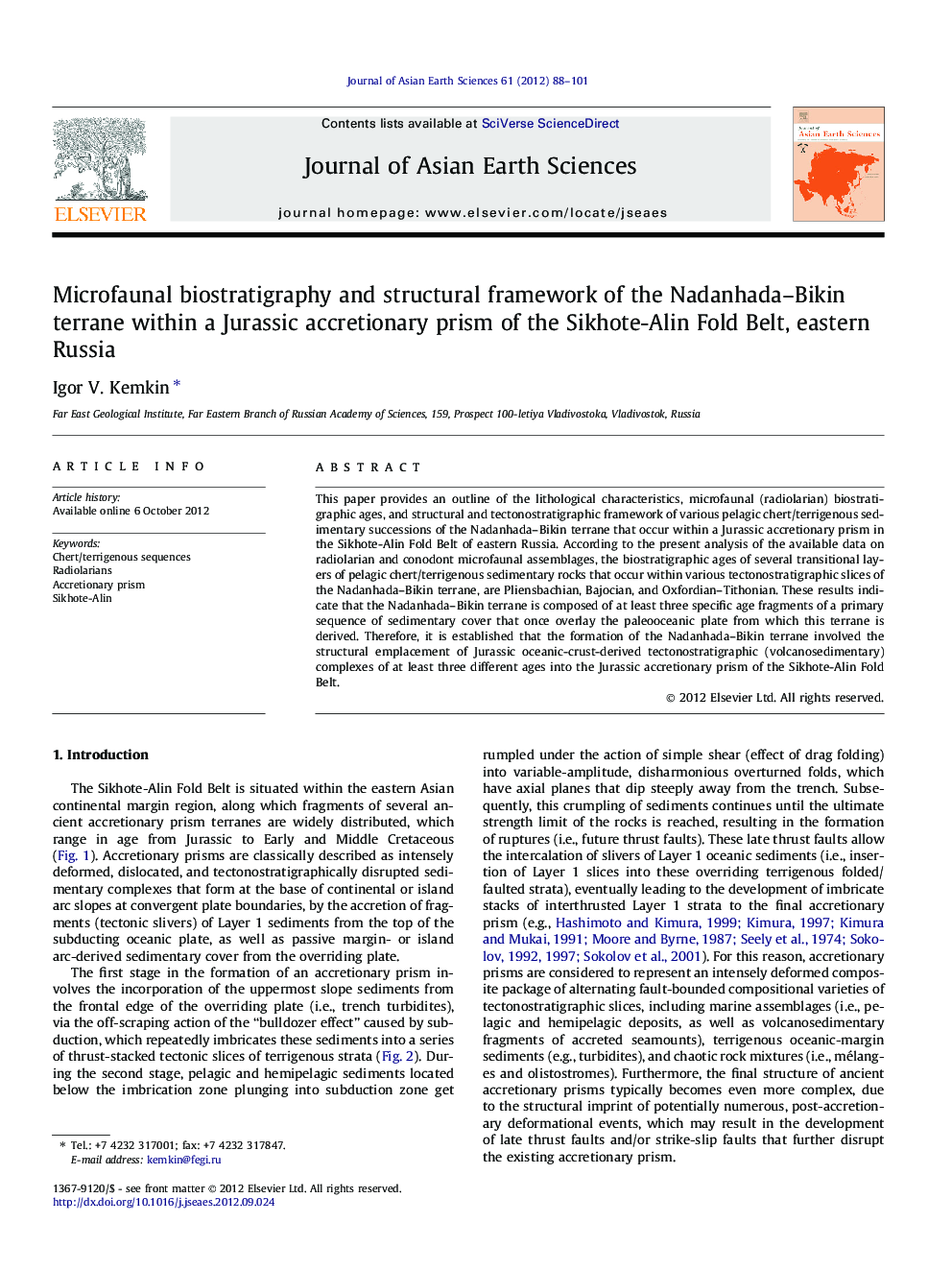| Article ID | Journal | Published Year | Pages | File Type |
|---|---|---|---|---|
| 4731149 | Journal of Asian Earth Sciences | 2012 | 14 Pages |
This paper provides an outline of the lithological characteristics, microfaunal (radiolarian) biostratigraphic ages, and structural and tectonostratigraphic framework of various pelagic chert/terrigenous sedimentary successions of the Nadanhada–Bikin terrane that occur within a Jurassic accretionary prism in the Sikhote-Alin Fold Belt of eastern Russia. According to the present analysis of the available data on radiolarian and conodont microfaunal assemblages, the biostratigraphic ages of several transitional layers of pelagic chert/terrigenous sedimentary rocks that occur within various tectonostratigraphic slices of the Nadanhada–Bikin terrane, are Pliensbachian, Bajocian, and Oxfordian–Tithonian. These results indicate that the Nadanhada–Bikin terrane is composed of at least three specific age fragments of a primary sequence of sedimentary cover that once overlay the paleooceanic plate from which this terrane is derived. Therefore, it is established that the formation of the Nadanhada–Bikin terrane involved the structural emplacement of Jurassic oceanic-crust-derived tectonostratigraphic (volcanosedimentary) complexes of at least three different ages into the Jurassic accretionary prism of the Sikhote-Alin Fold Belt.
